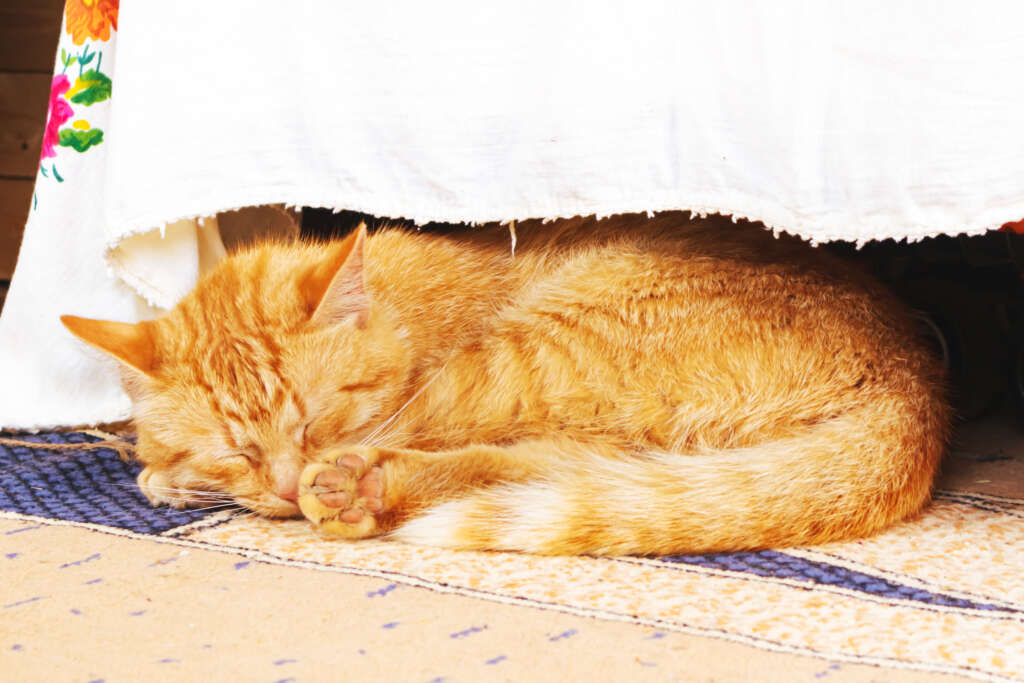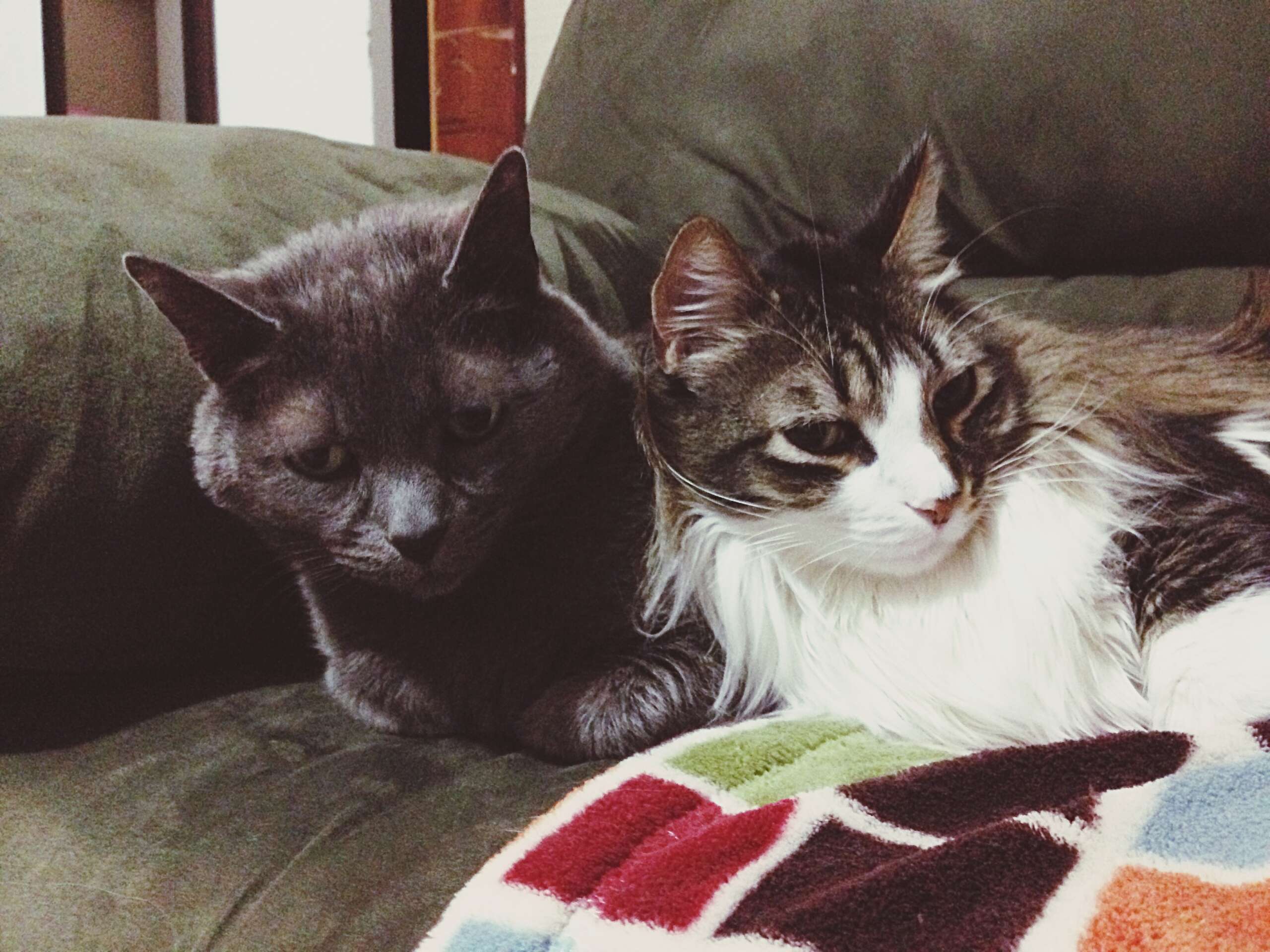Share This Article
Ever wondered why cats, known for their elegance, sometimes act out? Issues like unwanted messes or shredding your favorite chair are common. Behavior problems in cats affect 77% of pet owners, turning homes into battlegrounds. But, there are cat behavior solutions you can use.
Don’t think you’ll have to live in a ‘cat-dominant’ home. About 84% of cats use their claws on the wrong objects, and 10% choose odd places for their litter boxes. But why? And how can you lovingly fix these issues?
It’s not just about giving your cat the right toys or litter boxes. Understanding their behavior is key. For example, Siamese cats love to talk to their owners. And kittens can be trained early to behave better later on.
We’ll share tips and guides on how to correct cat behavior. Simple, effective techniques can change everything. By understanding cat behavior and using the right training, you can make your home happier for both you and your cat. Stay with us as we explore how to fix cat behavior issues and create a better living space.
Understanding and Managing Inappropriate Litter Box Use
Inappropriate litter box use is a big worry for many cat owners. It can come from health, behavior, or environmental issues. Knowing about common feline behavior issues and how to fix them is key.
Health problems like urinary tract infections or kidney stones can make cats avoid the litter box. These issues cause pain or discomfort, making the litter box a scary place. Regular vet visits help find and treat these health issues that lead to litter box problems. Studies show about 10% of cats may have trouble with litter box use at some point.
Behavior also matters. Cats are sensitive to their surroundings. Poor litter box cleaning, stressful homes, or not enough litter boxes can make them avoid the litter box. For homes with more than one cat, have one box per cat plus an extra. Cats like litter that’s one to two inches deep and may prefer certain types.

Where the litter box is placed is important too. Cats don’t like busy areas or being near loud appliances. It should be in a quiet spot that’s easy to get to. For older or challenged cats, a box with lower sides helps a lot.
Bad past experiences or changes at home can also affect litter box use. Therapy and changing the environment can help with resolving cat behavior problems. Slowly introducing the litter box again and rewarding good behavior can help cats use it right.
In the end, fixing litter box issues needs a full approach. It covers health, behavior, and the environment. Teaching cat owners how to keep the litter box area nice helps prevent these common feline behavior issues.
Dealing with Excessive Cat Scratching
Cat scratching is a natural behavior for our feline friends. It helps them condition and shorten their claws and mark their territory. Understanding this is key to how to correct cat behavior in indoor settings where furniture gets scratched.
77% of pet parents say they have behavior issues with their cats. It’s hard to stop scratching completely, but training can help. Start by giving them scratching posts that feel natural.
These posts should be tall and sturdy, like tree trunks. Cats like different textures like sisal, carpet, or bare wood. Place them near where they sleep or hang out to encourage them to use them.
Playing with cats often can also help change their scratching habits. It makes them happy and strengthens your bond.
Being patient and consistent is important when dealing with this behavior. Tools like Feliscratch, a pheromone-based product, can help cats scratch in the right spots. These tools are great for cat behavior training. Also, cover furniture with less appealing materials to stop them from scratching it.
Don’t use physical punishment because it can make cats anxious and cause more problems. Instead, use things like ultrasonic alarms to gently stop them from scratching. Give them lots of things to do and play with to reduce scratching caused by boredom or stress.

Resolving Aggression in Cats
Aggression in cats can show up in many ways, like hissing or swatting. It’s important to know why they act this way to fix cat behavior issues. Sadly, 27 percent of cats go to shelters because of aggression, showing we need good ways to correct cat behavior.
There are different kinds of aggression, each needing its fix. Fear aggression might come from a cat’s bad past with new things. If a cat feels trapped and can’t get away, it might get worse. Play aggression in young cats often means they didn’t get enough play early on. So, they need more play and things to do to feel like they belong.
It’s also key to look at health issues that make cats act out. Things like hyperthyroidism, arthritis, or dental problems can make them uncomfortable and aggressive. First, a vet check is needed to find out if there’s a health problem before trying to change their behavior.
Creating a calm place and not punishing them are key to helping aggressive cats. Using pheromone diffusers, changing their diet, and giving supplements can help calm them down. Toys and exercise can also turn their aggressive feelings into better behaviors, stopping them from getting angry from being bored, or having too much energy.

Understanding why cats act out because of territory or status is important, especially with more than one cat. Having a routine and giving each cat its own things can stop fights and keep the home peaceful. By tackling these problems, cat owners can cut down on aggressive behavior, making life safer and more peaceful for everyone.
In short, being quick to act and watch for aggression can really help fix cat behavior issues. Working with animal behaviorists or vets and making a special home can lead to better management and solving aggressive behaviors in cats.
Introducing Proper Cat Behavior Training Techniques
Dealing with behavior problems in cats begins with understanding the causes and using the right solutions. Training techniques help encourage good behavior and solve common issues. Positive reinforcement, desensitization, and counterconditioning are key to creating a supportive learning environment.
Positive reinforcement is vital for training cats. It rewards good actions with treats or praise. For example, giving a cat a treat when it uses the scratching post teaches it where to sharpen its claws.
Desensitization and counterconditioning help cats with fear or anxiety. They expose the cat to its fears in a positive way. For example, introducing a new cat slowly with treats and play can make the experience less stressful.
For severe behavior problems in cats, advanced techniques like shaping and overlearning work well. Shaping rewards small steps towards a behavior, making it a natural part of their life. Overlearning makes the behavior automatic, reducing fear or anxiety in stressful situations.
Creating a supportive environment is key. This means providing enough food, water, and litter boxes in multicat homes. Traditional litter boxes without covers help prevent fights by avoiding ambushes.
Using these training methods can solve and manage cat behavior problems. It makes homes peaceful for cats and humans alike.
Common Cat Behavior Problems: Identifying and Addressing Them
Identifying and resolving cat behavior problems starts by noticing signs of discomfort or stress. Cats may avoid the litter box, scratch too much, or become suddenly aggressive. These signs often mean there’s an issue that needs attention. Common feline behavior issues can be subtle, so watching your cat closely is key.
Many cats have trouble with litter box use, making proper litter box care crucial. Make sure each cat has its clean box and an extra one. Where the box is, the type of litter used, and how clean it is affect whether a cat uses it.
Aggression can come from pain, fear, or stress. Seeing a vet is important to check for health reasons for sudden aggression. Besides health, making your cat’s environment richer and changing their behavior can help. For example, toys that mimic prey can stop play biting or scratching.
Using positive reinforcement to teach cats good behaviors is a good idea. Reward them for using their scratching post or litter box right. But, don’t punish them as it can make things worse.
If your cat has ongoing common feline behavior issues, you might need a pro. A behaviorist can give advice and plans that fit your cat and the problem. They can help with issues like being active at night, making too much noise, or having trouble with litter box use. It’s important to see these behaviors as ways of communicating, not being bad.
In conclusion, being alert and proactive is key to spotting and fixing cat behavior problems. Acting early helps your cat and makes living together better for everyone.
Curbing Nighttime Activity and Sleep Disturbances
Many indoor cat owners get woken up by their cat’s night activities. It’s important to understand and change your cat’s night behavior. Cats are most active at dawn and dusk, which can disturb their owners’ sleep.
Pam Johnson-Bennett suggests a routine that mimics their natural cycle of ‘hunt, feast, groom, sleep’. This means playing with your cat to satisfy their hunting instinct, then feeding them. This helps them sleep better at night.
Pam Johnson-Bennett emphasizes that a consistent schedule with play and feeding times can help reduce night activity.
Valerie Tynes, DVM, says indoor cats wake up more at night because they’re bored and lonely. Adding puzzle toys and fun activities during the day can help them sleep better at night.
To stop cats from waking you up at night, ignore them when they try to get your attention. Terri A. Derr, DVM, recommends crate training for kittens to help them sleep quietly. Also, make your home calm at night with less noise and dim lights.
Health problems can make cats more active at night. If your cat’s night behavior changes suddenly, they might be sick. It’s important to take them to the vet to check for things like hyperthyroidism or infections.
In conclusion, changing your daily and evening routines, keeping your cat busy, and knowing about health issues are key to training your cat. This helps both cats and owners sleep better at night.
Controlling Excessive Vocalizations in Felines
Feline owners often struggle with fixing cat behavior issues, like howling, meowing, and crying. These sounds come from different needs or distress signals. To how to correct cat behavior, it’s key to know why cats make these sounds. Some breeds, like Siamese cats, tend to be more vocal, often wanting attention or just being their lively selves.
Pet parents may find the variety of sounds from their cats overwhelming. Setting regular feeding times and using automatic feeders can help with hunger-related meows. Spaying or neutering can also reduce yowling caused by reproductive needs. It’s important to be consistent in teaching your cat that being quiet gets attention. Adding toys and engaging in play can also satisfy their curiosity and cut down on meows for attention.
Older cats with cognitive issues or discomfort may vocalize more. Owners should talk to a vet to check for health problems. Providing toys and playtime during the day can improve their sleep and reduce night-time meowing. While punishment may stop a cat from meowing, it’s important to understand what causes the meowing. Sometimes, vets suggest drug therapy to help cats adjust to new sleep habits. It’s key to get professional advice when dealing with these issues.


